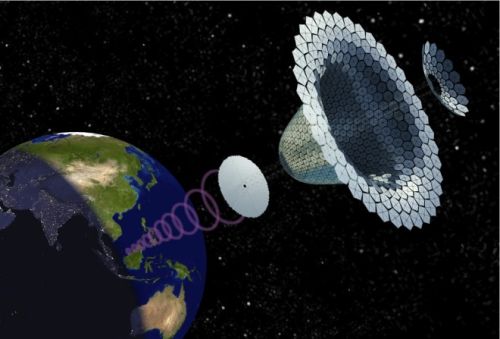Researchers are continually trying to improve the ways to capture solar energy more efficiently for powering industries, towns, remote villages and even for military purposes. Military needs lots of fuel for its operations. In fact, Pentagon oil consumption is one of the largest in the world and with the fuel price rise, the military is searching for other energy options. Therefore, in the United States Naval Research Laboratory, researchers are trying to tap solar energy directly from the space and send it to military base operating in far-flung remote villages.
The Military requires lots of fuel for its operations, approximately 4.6 billion gallons of fuel annually. And when working in remote areas, meeting fuel demands gets difficult and even involves risks. Normally the diesel generators are being used by the military. Transporting fuels via roads or employing parachutes for dropping fuel canisters are very dangerous and are also expensive. As per the CNN Money report, during the Iraq war between the year 2003 to 2007, one in eight U.S. soldiers (around 3000 soldiers) were either killed or wounded while trying to protect these fuel convoys.
Solar Panel Satellite
Spacecraft engineer Paul Jaffe and the NRL researchers have designed and tested two laboratory modules of a solar panel satellite to tap and beam solar power. These modules are four times more productive than the terrestrial solar panels. The so called “sandwich” solar panel satellite will have photovoltaic solar panels as the top layer for capturing the solar energy. The middle layer of the module consists of electronic systems which transforms the solar energy into a radio frequency. This radio frequency will be directed towards the desired target at the earth by an antenna at the bottom layer of the module.
The other module will modify the sandwich design in which the solar panels will open up for increasing the surface area for absorbing solar energy without getting overheated, at the same time.
To assemble such modules in the space, the NRL’s Space Robotics Group is planning to create robots and employ them to assemble numerous such sandwich module to form first ever one kilometer long, powerful satellite.
Carriage by Radio Frequency
The use of radio frequency as a source of carrying power is new, as so far they are only believed to be used for communication and associated them with radio, cell phones or TV, says Jaffe. According to NRL harvesting solar power directly from the space has many advantages. Unlike the solar panels on earth, which proves less efficient on a rainy days, or days with clouds or at nights, these problems will not affect the performance in panels placed in space and can work without a break. The satellite would ideally be supply energy at 10 cents per kilowatt hour. This is the same amount as what Americans usually pay, said the NRL.
The idea of satellite to capture sun radiation from the space has not just impressed the U.S. Military, but many other organizations are also looking forward for such energy production. The Shimizu Corporation of Japan, plans to build a solar strip called the Luna Ring which will be 11,000 miles long placed on the moon and will transmit the absorbed solar energy to the earth. A San Francisco based Pacific and Gas & Electric organization in California also intent to buy space solar power from an energy startup Solaren corp beginning in 2016. Such solar power satellite seems to have a promising future. The major drawbacks of the solar panels can be overcome, making them a constant source of energy till the time the sun is shining.





